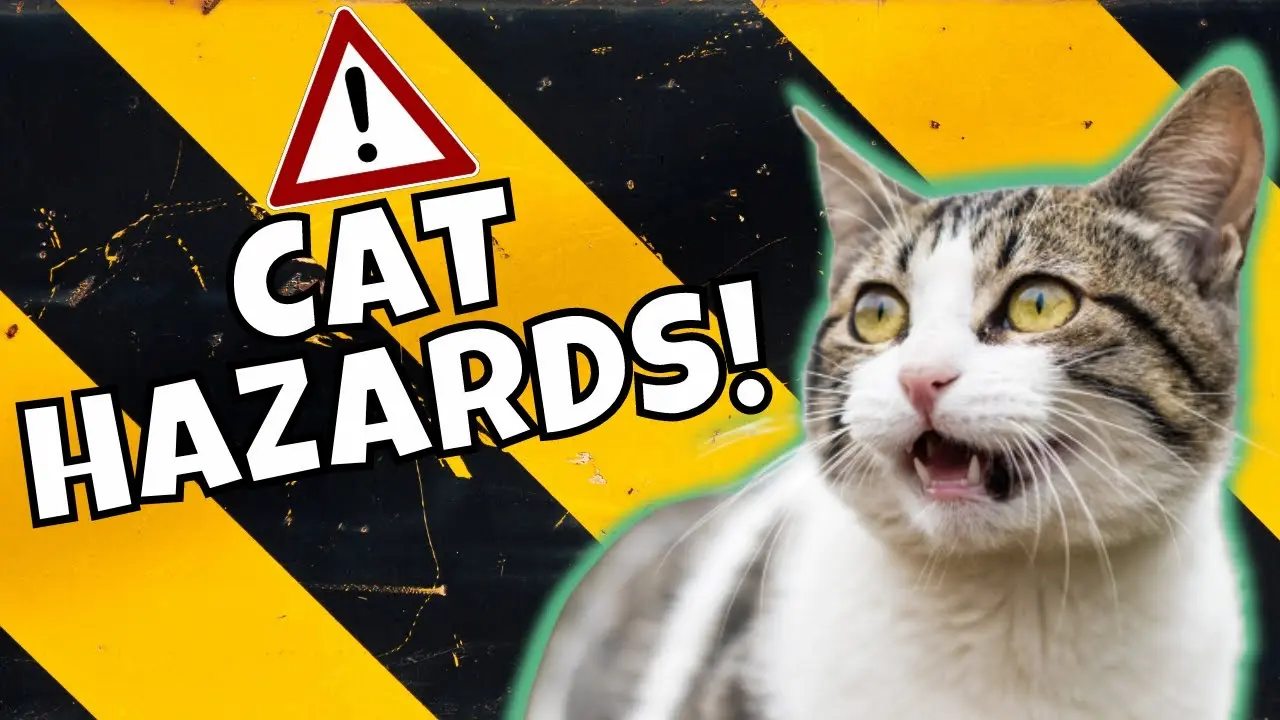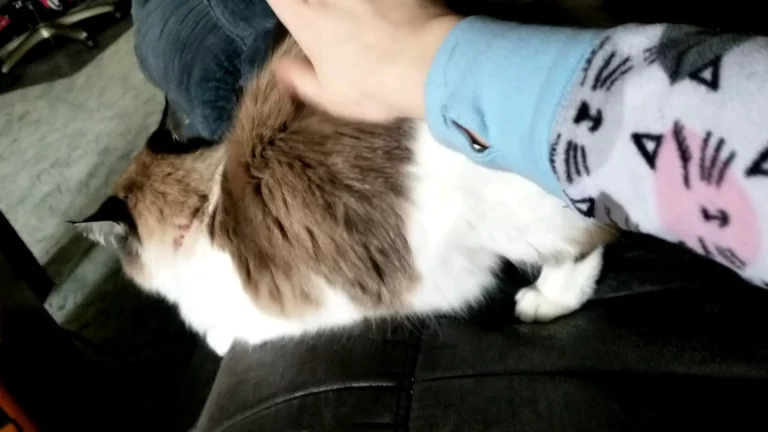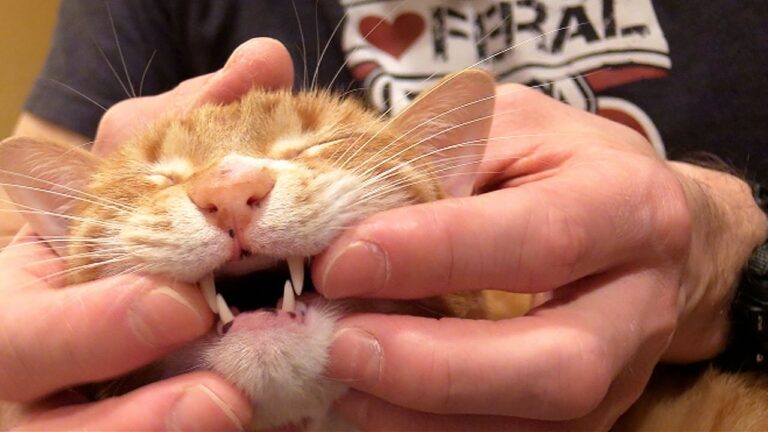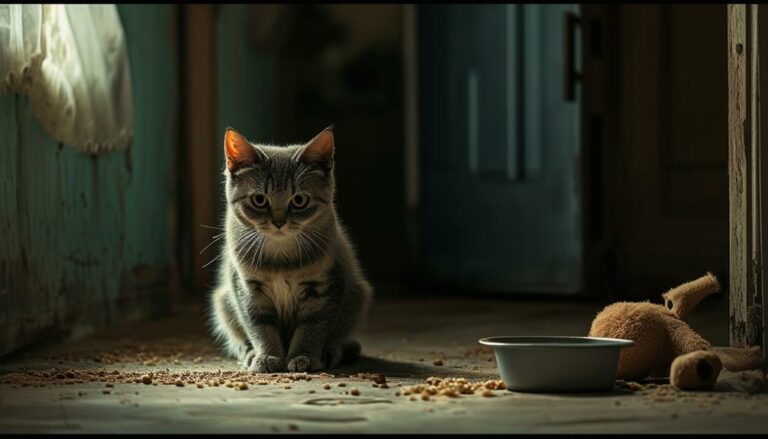5 Ways To Kitten Proof Your Home
Ensuring your home is safe for a new kitten involves more than just providing food and a cozy bed.
You need to think about potential hazards that can turn your living space into a danger zone for your curious little companion.
Have you considered securing hazardous areas or hiding electrical cords?
What about storing toxic substances out of reach or blocking small openings?
And don’t forget the importance of choosing safe toys. If you’re wondering how to tackle these tasks effectively, let’s explore each step to create a secure environment for your kitten.
Secure Hazardous Areas
Start by blocking off any areas where your curious kitten could get hurt, like the kitchen and laundry room.
These spaces often contain cleaning supplies, sharp objects, and small items that can be hazardous.
Use baby gates or close doors to restrict access, ensuring your kitten can’t wander into dangerous zones.
Next, store all chemicals and cleaners out of reach.
Cabinets, especially those under sinks, should be secured with childproof locks. This prevents your kitten from ingesting anything toxic.
Look for any small nooks or crannies where your kitten might get stuck. Seal gaps behind appliances and furniture with boards or foam to avoid any tight squeezes.
You should also secure any heavy objects that might fall. Shelves, televisions, and other large items should be anchored to the wall.
Kittens love to climb and explore, so make sure anything they might scale is stable.
Additionally, keep trash cans covered. The smell might attract your kitten, leading to potential ingestion of harmful items.
Lastly, check for any plants that might be toxic to cats. Common houseplants like lilies and poinsettias can be hazardous.
Move these plants out of reach or replace them with pet-safe alternatives.
Hide Electrical Cords
To protect your kitten from electrical hazards, hide or cover any exposed cords in your home. Kittens are curious and playful, and electrical cords can seem like enticing toys to them.
Start by inspecting each room for visible cords. Use cord organizers or covers to keep them out of sight and out of reach.
You can find these products at most hardware stores; they’re designed to bundle and conceal multiple cords at once, reducing the risk of your kitten chewing on them.
For cords that can’t be hidden easily, consider using a bitter-tasting spray specifically made to deter pets from chewing. Apply it to the cords to make them less appealing to your kitten.
Another option is to use furniture or strategically placed rugs to cover cords, ensuring they aren’t accessible to your pet.
Additionally, keep an eye out for damaged cords and replace them immediately. Frayed wires pose a significant risk, not just to your kitten, but to your entire household. Regularly check and maintain the condition of your cords to prevent accidents.
Store Toxic Substances
Ensuring your kitten’s safety involves securely storing all toxic substances, such as cleaning supplies, medications, and certain plants, out of their reach.
Kittens are naturally curious, and their playful nature can lead them into dangerous situations if toxic substances are left accessible.
Start by placing cleaning supplies in cabinets with childproof locks. This simple step prevents your kitten from accidentally ingesting harmful chemicals.
Medications should be stored in high cabinets or drawers that are impossible for your kitten to access. Even over-the-counter medications can be extremely dangerous for pets.
Additionally, be mindful of where you leave your bag or purse, as kittens can easily climb in and find pill bottles.
Certain plants, such as lilies, poinsettias, and philodendrons, are toxic to cats. Make sure to research any plants you have in your home and move toxic ones out of reach or replace them with safe alternatives.
Block Small Openings
While safeguarding toxic substances, don’t forget to block small openings where your kitten might get stuck or lost. Kittens are naturally curious and love to explore, sometimes squeezing into the tiniest spaces.
To guarantee any mishaps, inspect your home for gaps behind appliances, under furniture, and in cabinets.
Use barriers like foam pipe insulation or furniture pads to fill these spaces, deterring your kitten from venturing into dangerous areas.
Check for gaps around doors and windows as well.
Seal any openings with weatherstripping or caulk to keep your kitten safe and avoid potential escapes.
Make sure that vents, ducts, and other small openings are securely covered.
You can use vent covers or mesh screens to block these entry points, which will also help keep your home more energy-efficient.
Pay special attention to the laundry room, where kittens might crawl into washing machines or dryers.
Always check inside appliances before using them, and keep doors closed when not in use.
Additionally, inspect closets and drawers for any small gaps and use child-proof latches to keep them shut.
By thoroughly checking your home and blocking small openings, you’ll create a safer environment for your playful kitten.
Choose Safe Toys
Selecting the right toys for your kitten is crucial to both their safety and enjoyment.
When choosing toys, opt for items specifically designed for kittens to guarantee they’re safe and appropriate.
Avoid toys with small parts that can be easily swallowed or choked on. Instead, look for toys made from durable materials that can withstand a kitten’s playful nature without breaking apart.
Interactive toys, like feather wands or laser pointers, can provide great mental and physical stimulation.
These toys encourage your kitten to chase, pounce, and stay active, helping them develop coordination and strength.
However, remember to never shine a laser pointer directly into your kitten’s eyes, as it can cause damage.
Soft toys filled with catnip can be a delightful treat, but ensure they don’t have any loose threads or parts that could be ingested. Additionally, avoid toys with strings or ribbons unless you’re supervising playtime.
Kittens can easily get tangled, leading to potential injuries.
Lastly, regularly inspect your kitten’s toys for wear and tear. Replace any broken or damaged toys promptly to maintain a safe environment.
Conclusion
By following these five steps, you’ll create a safer environment for your new kitten.
Secure hazardous areas to prevent accidents, hide electrical cords to avoid chewing hazards, and store toxic substances out of reach.
Block small openings to keep your kitten from getting stuck or escaping, and choose safe toys to keep them entertained.
With these measures in place, you can guarantee your kitten explores and plays safely in their new home.






